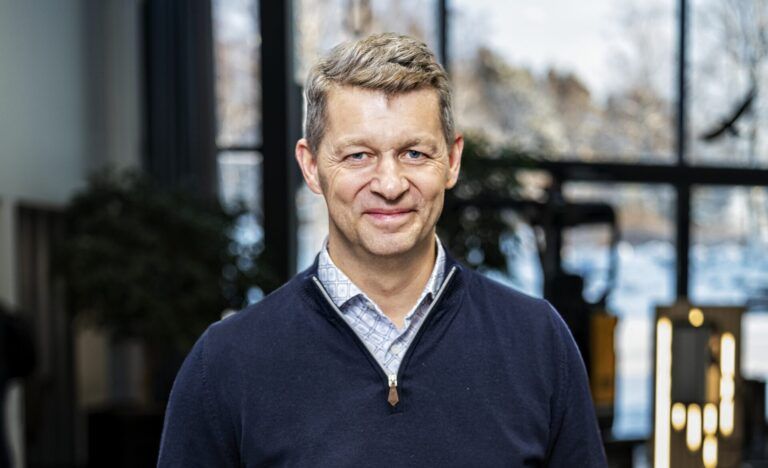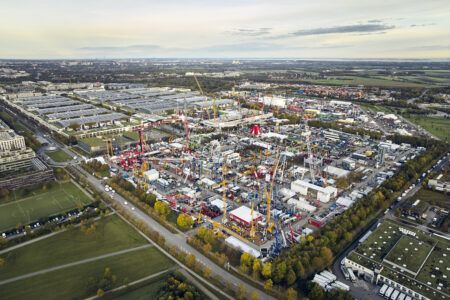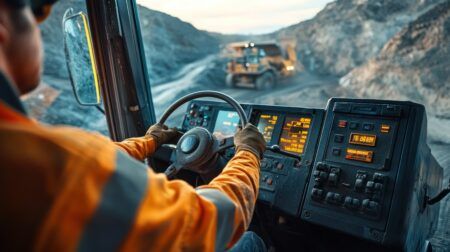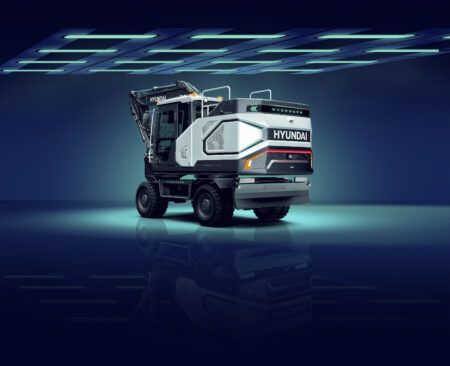Melker Jernberg, president of Volvo Construction Equipment, reveals how he is meeting the short- and long-term challenges of keeping the OEM on its path to net zero following its jaw-dropping vehicle launch at Bauma in Munich
As you navigate through a dense canopy of trees and vast expanse of woodland, you will come across the Växjö municipality in Kronoberg County, Sweden, also known as the greenest city in Europe. Push ahead and you’ll soon find Braås, the home of Volvo CE’s manufacturing, R&D and test facility and, as a testament to Växjö’s esteemed reputation, its first Climate Efficient site.
In 2014, Volvo CE’s Braås site was the first in the construction sector to achieve a fully carbon neutral operation, leveraging renewable energy sources like biofuels and hydropower. In 2018, the site was declared landfill-free and, as of last year, the Braås facility was awarded a Climate Efficient Site certification. The main groundwork in Braås was a comprehensive inventory of all carbon emissions connected to site activities across its approximately 60,000m2 of manufacturing buildings and offices. This mapping helped its nearly 1,000 employees to actively engage in targeted continuous improvements throughout manufacturing, energy systems, material handling, product testing, waste management and transport and distribution.

It’s at the Braås facility that iVT once again meets an old friend – Volvo CE president Melker Jernberg, the man who is leading the focus on future-proofing the company. “Our commitment to drive the decarbonisation of construction remains firm, which is why we constantly push ourselves to set new benchmarks for sustainability,” he says. “We believe in leading by example with concrete action, starting with ourselves. The employees at Braås keep demonstrating what can be achieved with clear targets and a culture of learning and involvement, where everyone is enabled and encouraged to make meaningful contributions. We are proud of our achievements in Braås; however, we know we make the biggest difference when our machines are in use.”
Sustainable steel
Nevertheless Jernberg is fully aware that reducing and OEM’s carbon footprint isn’t only about cutting tailpipe emissions. The global steel industry is responsible for 11% of all CO2 emissions. With around 70% of a construction machine’s weight coming from steel and cast iron, Volvo CE has committed to reducing carbon in the steel used in its machines.
In 2022, Volvo CE became the first OEM in the world to deliver a construction machine made with fossil-free steel, and currently, 13% of the total mass of steel in all articulated haulers manufactured in Braås is low carbon-emission steel. With these changes, Volvo CE can reduce total CO2 emissions by around 13,000 tonnes per year. While it is possible that this number will rise, Jernberg is under no illusions about the huge challenge ahead – however it is one he is prepared to meet with his trademark good-natured determination.
“We have invested a lot in this because it will happen and it must happen, however the transition to fossil-free steel is too slow,” he says. “We don’t have any rules or laws that force the industry, there is too much administration and not enough happening. It is a big challenge, but there needs to be change.”
The future of autonomy
Aside from sustainability, Jernberg is leading Volvo to future-proof its machines in another way with the integration of autonomous technology. “We have different levels of autonomy in our machines,” he says. “We have help systems, Dig Assist for example, which you could say is half autonomous because it digs according to a specific model, but you still have a driver. And then we have fully autonomous machines which we are going all the way with. It’s good to have those options.”
Based on the HX02 concept, the TA15 is a cabless, autonomous electric hauler. Part of the Tara autonomous transport solution, developed with Volvo Autonomous Solutions which is now working with Volvo Trucks to test fully autonomous trucks on public roads. Jernberg is meanwhile focused on the next stage for construction machinery.
“We’re using our knowledge to think about the next step,” he says. “We have been quite advanced with new concept – fully electric, fully autonomous and no cab. But now we can implement those technologies in other products, making autonomous and human-operated versions of the same machine, but for different applications. You can have an autonomous machine even if it has a combustion engine. We’re trying to make all our systems modular.”
Driving EVs forward
Volvo CE’s electrification journey, which was highlighted at Bauma in 2019 with the launch of its first two electric machines, has accelerated significantly. “For our industry, 2019 was very early to launch electric machines so it was a game-changing moment. We started with small machines because they were the quickest to manufacture and the technology available was limited. Since then, we have climbed up the size classes quite rapidly to now produce our mid-range 23-tonne EC230 electric excavator and the 20-tonne L120 electric wheel loader. We still have our diesel-powered machines, however we’ve now got a modular system. When investing in a diesel machine and a production line for that machine and then investing in an electric machine and a separate production line, you are very dependent on the market reaction and volumes. With our approach, we have the same production system for every size class and driveline. It’s almost like having the same machine but changing the driver,” says Jernberg.
At this year’s edition of Bauma, Volvo displayed its first-ever zero emission-only lineup. “We are at a critical moment in our industry’s transformation. Bauma will see our biggest launch ever, featuring a range of versatile technologies, we are prepared to offer industry-leading products, services, and solutions to assist customers at any stage of their journey. We stand firm in our commitments to innovation, sustainability and leadership in the industry,” says Jernberg.
EVs and Trump
The recent election of President Trump in the US presents potential challenges for EV manufacturers. In his executive order, Trump said he was eliminating previous president, Joe Biden’s EV mandate with a view that EVs were too expensive and lacked adequate range. Whether it’s in Munich or the US, however, Volvo CE is continuing its commitment to bolstering its zero emission vehicle offering. “We are smart and we’re not changing direction,” says Jernberg. “We produce our entire portfolio in the US, so we’re not worried about our diesel-powered machines. As for our electric machines, it’s too early to tell. We have invested a lot, and we will continue this journey how we planned and promised, but it also depends on the world around us. If you look at the hard work we’ve done and the hard work we will do in the next say, 40 years, Trump’s four-year presidential term cannot completely destroy that.”
Jernberg has established the direction he wants to take Volvo CE with a continued focus on creating machines for the future. “We’ve been through many tough years, with declines in key markets, for example, but we have consistently improved and showed what we’re capable of,” he says. “In 2019, the anticipation and the crowds of people who gathered for the big reveal of our electric machines, was a pivotal moment for us as no one had ever done that before. We really are a different company now, but it has taken years to change our direction. Now we know what to invest in, how we should do things, and we do not hesitate.”
This interview first appeared in the March issue of iVT
Images courtesy of Volvo CE





